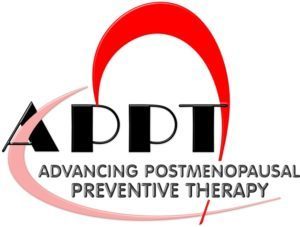The clinical trials at ARU follow strict scientific standards, which protect patients and help produce reliable results. The team at ARU follows protocols which are master plan. This protocol emphasizes what will be done during the course of the clinical trial and why it is done.
NAPS, was a randomized, double-blinded, placebo-controlled trial to determine whether nattokinase decreases atherothrombotic risk and reduces the progression of atherosclerosis and cognitive decline. Supplementation of nattokinase or placebo in 240 healthy non-demented women and men for three years. The primary trial end points will be measurement of carotid arterial wall thickness and arterial stiffness, early changes of atherosclerosis that can be measured safely by ultrasound scan, a non-invasive imaging techniques. The secondary trial end point will be ascertained through change in cognition measured by a neuropsychological battery. In addition, biochemical blood measurements and in vitro studies will be conducted to compare the effects of nattokinase relative to placebo on blood coagulation and thrombus break-down capabilities, blood flow properties, inflammation and inflammatory activation of endothelial cells that line blood vessels. [Read more about NAPS…]
ELITE was designed to study the biologic response of menopausal women to 17β-estradiol. In this double-blind, placebo-controlled trial, healthy postmenopausal women without clinical evidence of cardiovascular disease were randomized to 17β-estradiol 1 mg/day or placebo according to their number of years since menopause, <6 years or >10 years for up to 3-year (range 2 to 5 years). This is a non-invasive arterial imaging trial with a 2×2 factorial design (treatment x time since menopause). [Read more about ELITE…]
WISH was designed to study the cardiovascular and cognitive (thinking, memory) effects of high-dose soy-isoflavone supplementation in women. In this double-blinded, placebo-controlled trial, 350 postmenopausal women 45 to 92 years of age without diabetes and cardiovascular disease were randomized to 2 evenly divided daily doses of 25 g soy protein containing 91 mg aglycon isoflavone equivalents or to placebo for up to 3.5 years.[Read more about WISH…]
BVAIT was a randomized, double-blind, placebo-controlled, 2.5-year non-invasive arterial imaging primary prevention clinical trial to determine if B-vitamin supplementation reduces the progression of atherosclerosis (carotid intima-media thickness and coronary and abdominal calcification) in healthy men and women 40 years and older. [Read more about BVAIT…]
VEAPS was a randomized, double-blind, placebo-controlled, 2.5-year non-invasive arterial imaging primary prevention clinical trial to determine if B-vitamin supplementation reduces the progression of atherosclerosis (carotid intima-media thickness and coronary and abdominal calcification) in healthy men and women 40 years and older.]Randomized, double-blind, placebo-controlled, 3-year non-invasive arterial imaging primary prevention clinical trial to determine if vitamin E supplementation reduces the progression of atherosclerosis (carotid intima-media thickness) in healthy men and women 40 years and older.
WELL-HART was a randomized, double-blind, placebo-controlled, 3-year serial coronary angiographic/carotid ultrasonographic (carotid intima-media thickness) secondary prevention trial of estrogen versus estrogen plus progestin versus placebo to determine if hormone replacement therapy decreases the progression of atherosclerosis in postmenopausal women with established coronary artery disease.
EPAT was designed to study the effects of estrogen replacement therapy (ERT) on the progression of early atherosclerosis in healthy postmenopausal women without preexisting cardiovascular disease (CVD).In this trial A total of 222 healthy postmenopausal women 46 to 80 years old without CVD symptoms were randomized to receive either micronized 17B-estradiol (Estrace) 1mg/day, or a matching placebo tablet daily. Ultrasonography were used to measure the rate of change in the thickness of the carotid artery. Blood samples were used for measuring lipid and non-lipid mediators of ERT. [Read more about EPAT…]









